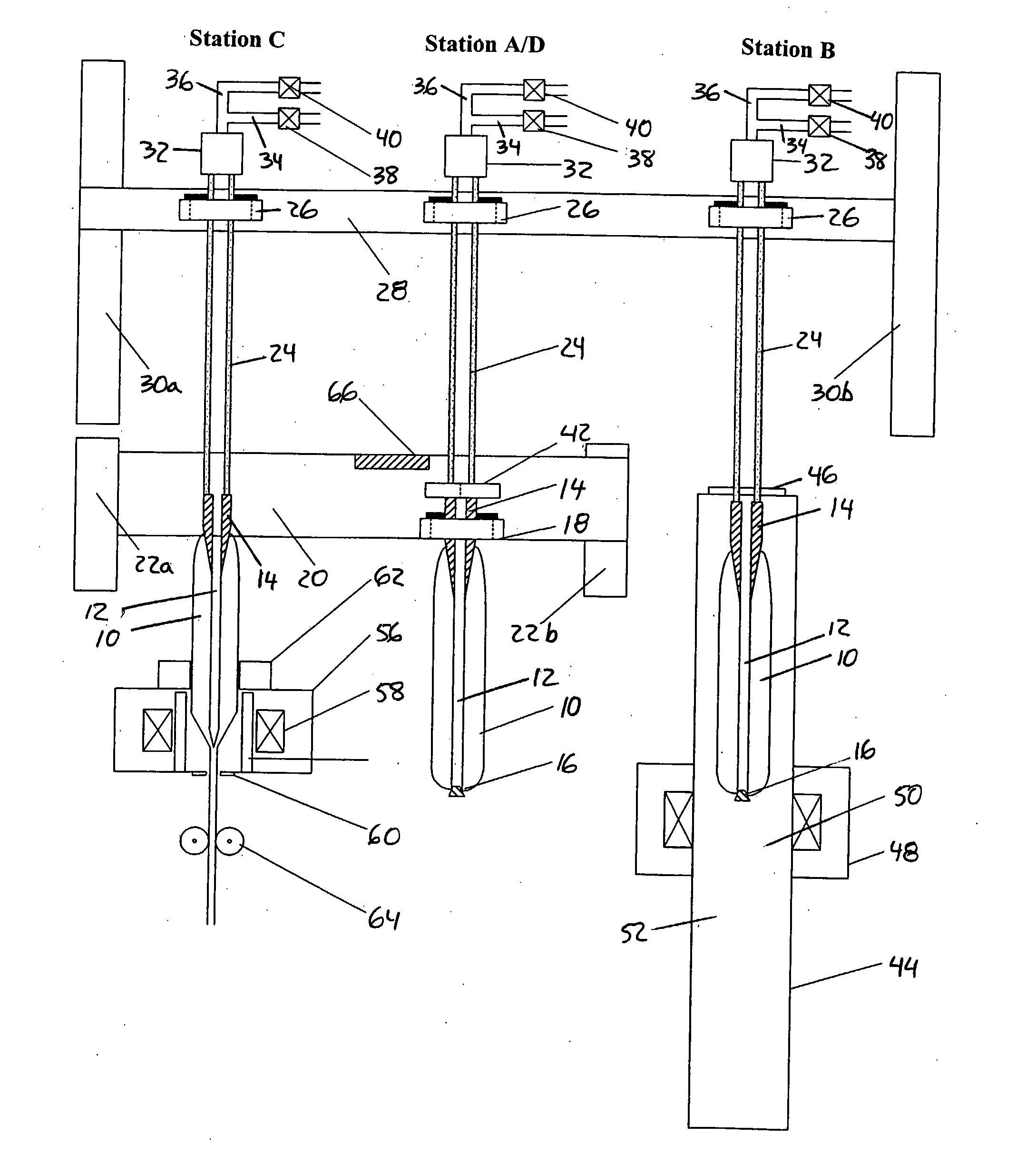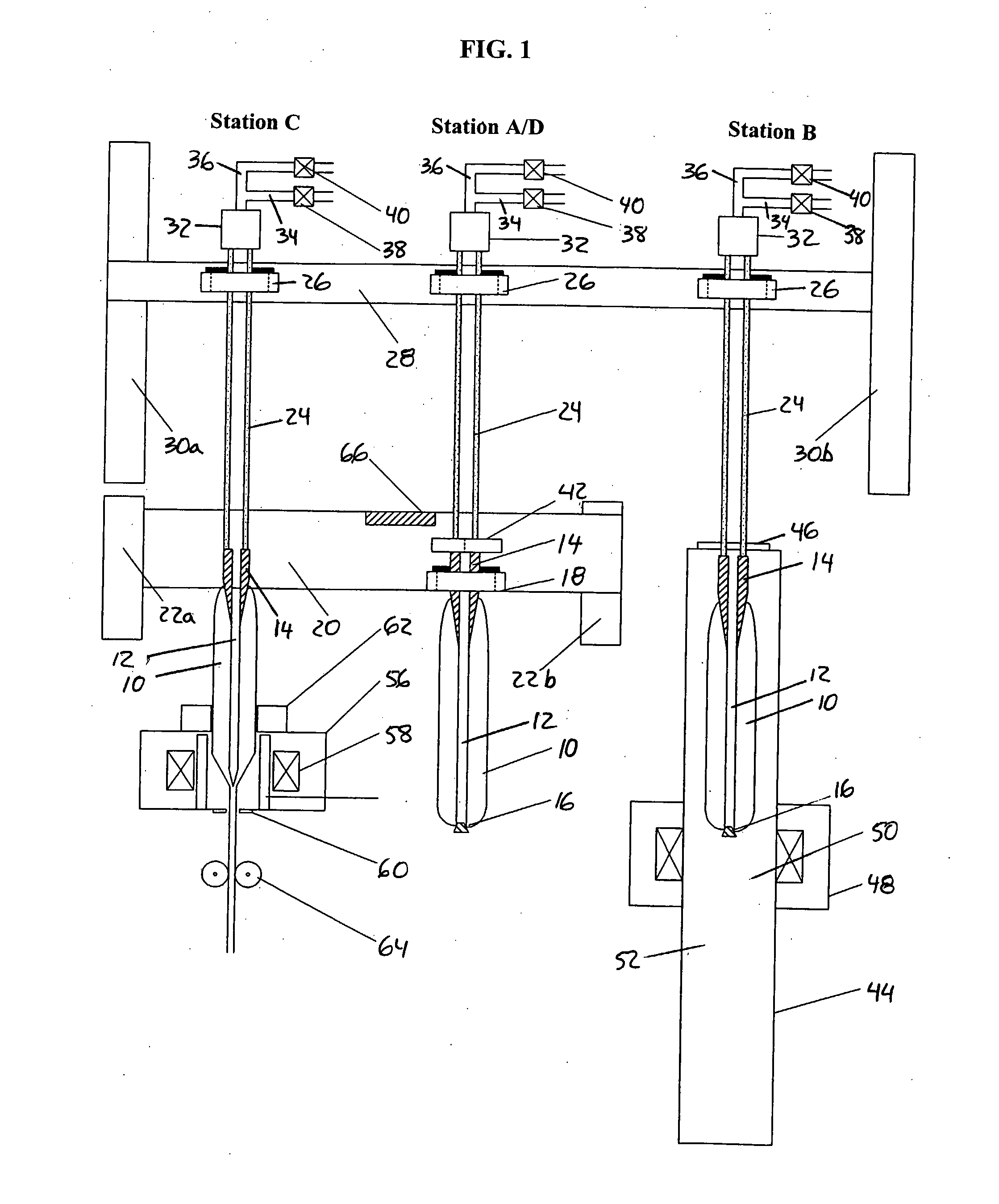Method and apparatus for manufacturing an optical fiber core rod
a manufacturing method and core rod technology, applied in the manufacture of tools, glass making apparatus, etc., can solve the problems of optical fibers with very low hydroxyl ion content, particularly difficult to use the ovd process to produce core rods, preforms,
- Summary
- Abstract
- Description
- Claims
- Application Information
AI Technical Summary
Benefits of technology
Problems solved by technology
Method used
Image
Examples
Embodiment Construction
With reference now to the illustrative drawings, and particularly to FIG. 1, there is shown an apparatus for sintering and elongating a porous optical fiber core preform 10. The core preform has a generally cylindrical shape, with a central aperture 12, as customarily is produced using an outside vapor deposition (OVD) process. The apparatus has three stations, including a loading / unloading station A / D used for steps A and D of the process, a sintering station B for step B of the process, and an elongation station C for step C of the process. A frame for supporting various components of the apparatus has been omitted from the drawings, for clarity.
With additional reference now to FIGS. 2 and 3, the porous core preform 10 is shown to have a tubular quartz handle 14 projecting from its upper end. A mandrel on which soot was deposited to form the preform, has been removed from the preform, leaving the central aperture 12 extending along the preform's entire length. A suitable quartz pl...
PUM
| Property | Measurement | Unit |
|---|---|---|
| Length | aaaaa | aaaaa |
Abstract
Description
Claims
Application Information
 Login to View More
Login to View More - R&D
- Intellectual Property
- Life Sciences
- Materials
- Tech Scout
- Unparalleled Data Quality
- Higher Quality Content
- 60% Fewer Hallucinations
Browse by: Latest US Patents, China's latest patents, Technical Efficacy Thesaurus, Application Domain, Technology Topic, Popular Technical Reports.
© 2025 PatSnap. All rights reserved.Legal|Privacy policy|Modern Slavery Act Transparency Statement|Sitemap|About US| Contact US: help@patsnap.com



